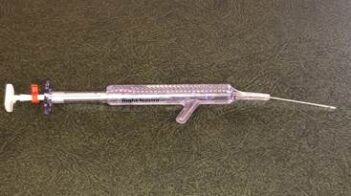The medical industry is notoriously difficult to enter for manufacturers. If a product or process already exists, there is little reason for customers to switch to a new one. Any change in providers, materials, inks or processes can result in devices that are required to be requalified with the Food and Drug Administration (FDA), which costs significant time and money.
Even so, medical device manufacturers soldier on because theirs is a healthy market, indeed: the US medical device market is estimated at $156 billion, with growth to exceed $200 billion by 2023. These devices, many of which are plastic, typically are utilized to:
- prevent or diagnose injuries or diseases
- measure bodily functions
- correct body parts or functions
Many of these devices require printed directions or labels to warn, instruct or simply identify what they are. While markings that are consistent and repeatable is important in every industry, it is even more true in an industry where reliability is literally a matter of life and death. To fulfill this need, device manufacturers have turned to pad printing. Simply put, pad printing is a process that can transfer a 2-D image onto a 3-D object. This is done by utilizing an indirect offset printing process that includes an image being transferred via a silicone pad onto a surface, which is often irregularly shaped. Examples of pad-printed plastic medical devices include:
- catheters
- tubes
- shafts
- clips
- syringes
- handles
- adapters
- housings
- connectors
Pad printing is usually just one part of a more complex medical device manufacturing process. Therefore, pad printing companies must operate within the parameters established by the original equipment manufacturers (OEMs) with high-quality and precise tolerances. Advantages of pad printing include:
- Printing on complicated surfaces
- Printing on irregular shapes
- Printing on very small devices
Pad printing is often less expensive than other printing methods, including digital methods. Pad printing is especially useful with high-volume manufacturing that demands high-quality and exacting tolerances.
As medical devices become more complex, 3D printing technologies are coming to the fore and can now offer highly functional and durable components in low volumes. (High-volume medical device production is still the province of processes such as plastic injection molding.)
Problems are common and include issues such as ink cup maintenance and ink leakage, poor image quality, pad quality and ink adhesion.
Even with these challenges, including an extremely complex approval process, strategic medical device manufacturers will always strive to enter and conquer this market.
